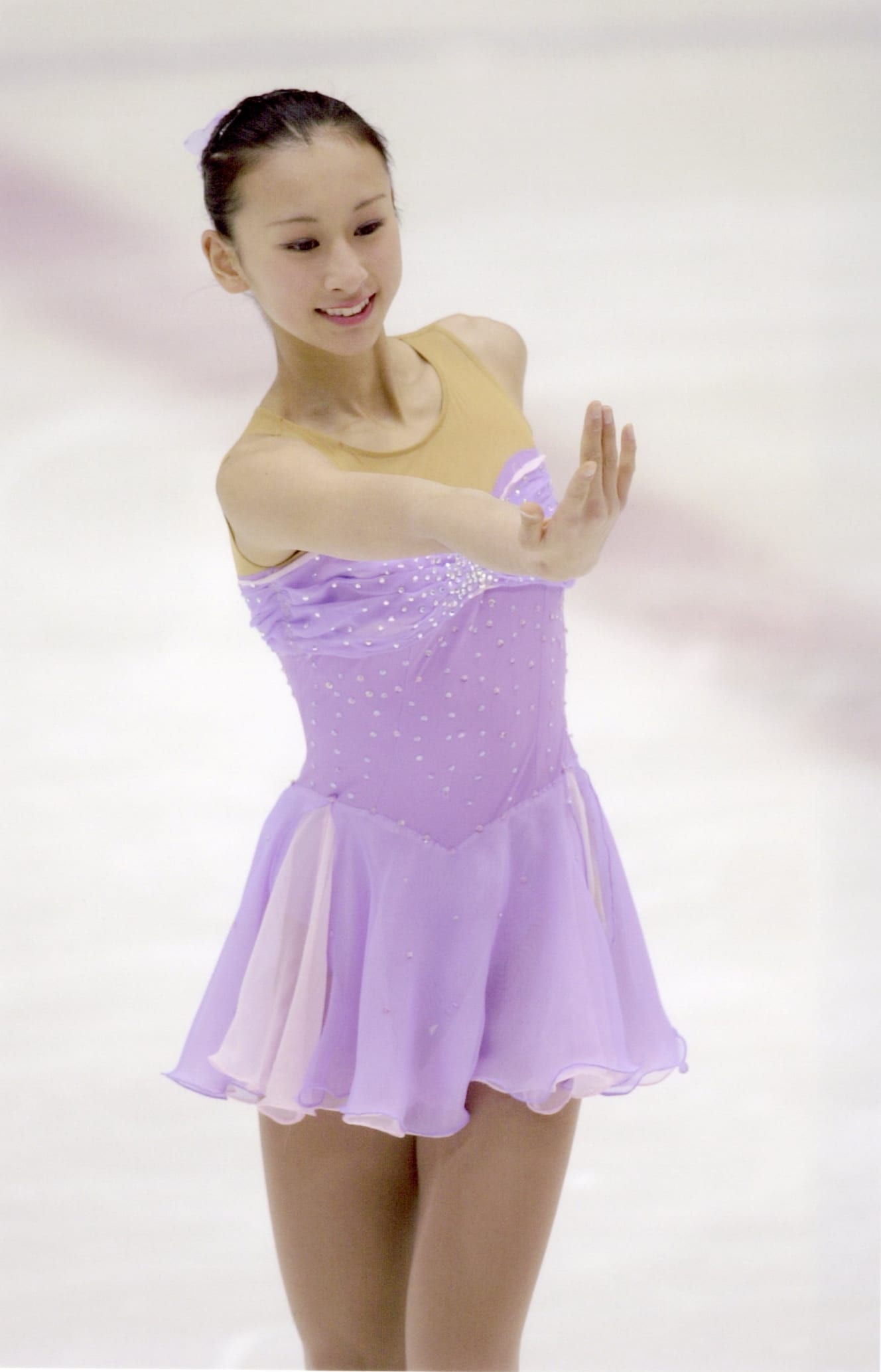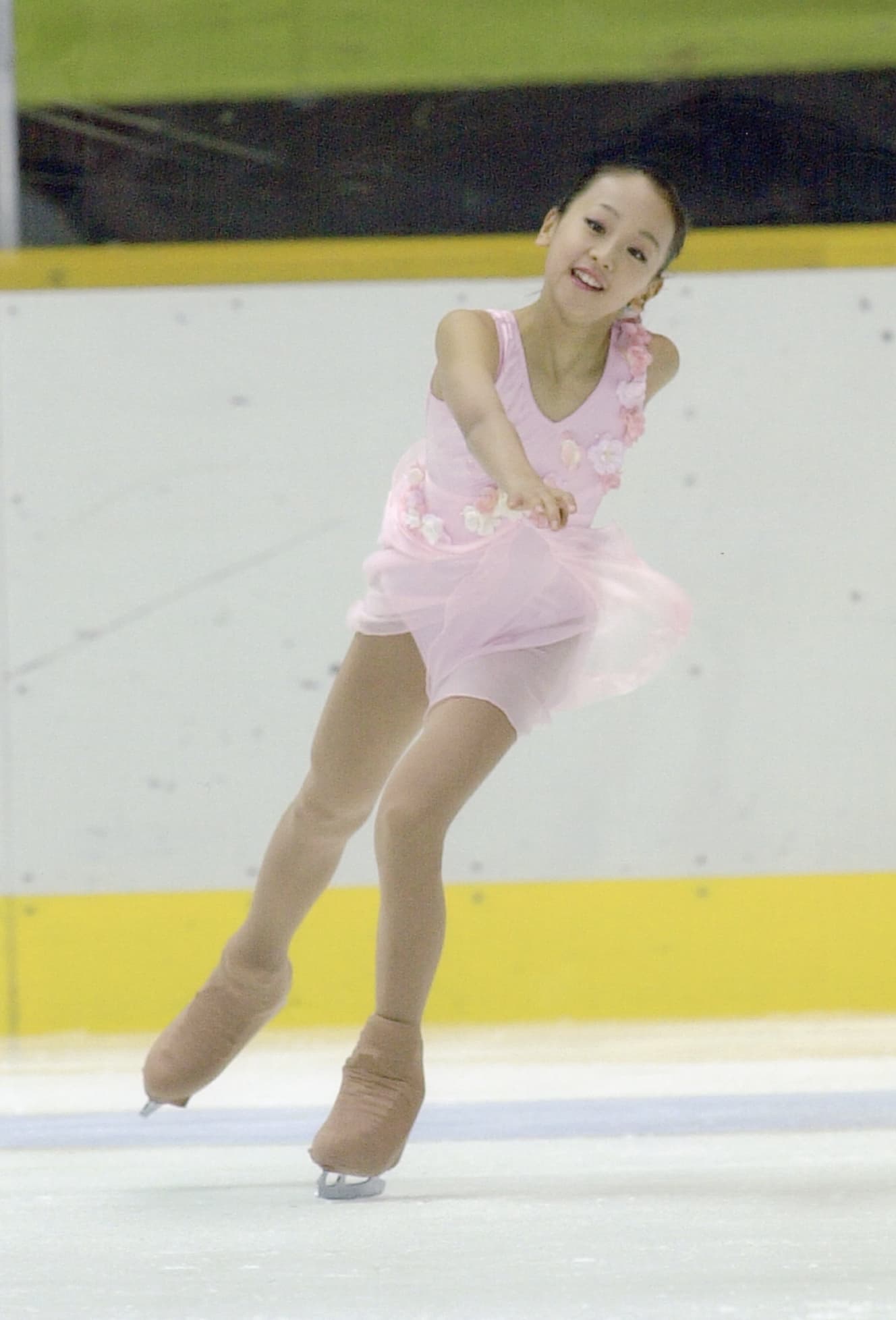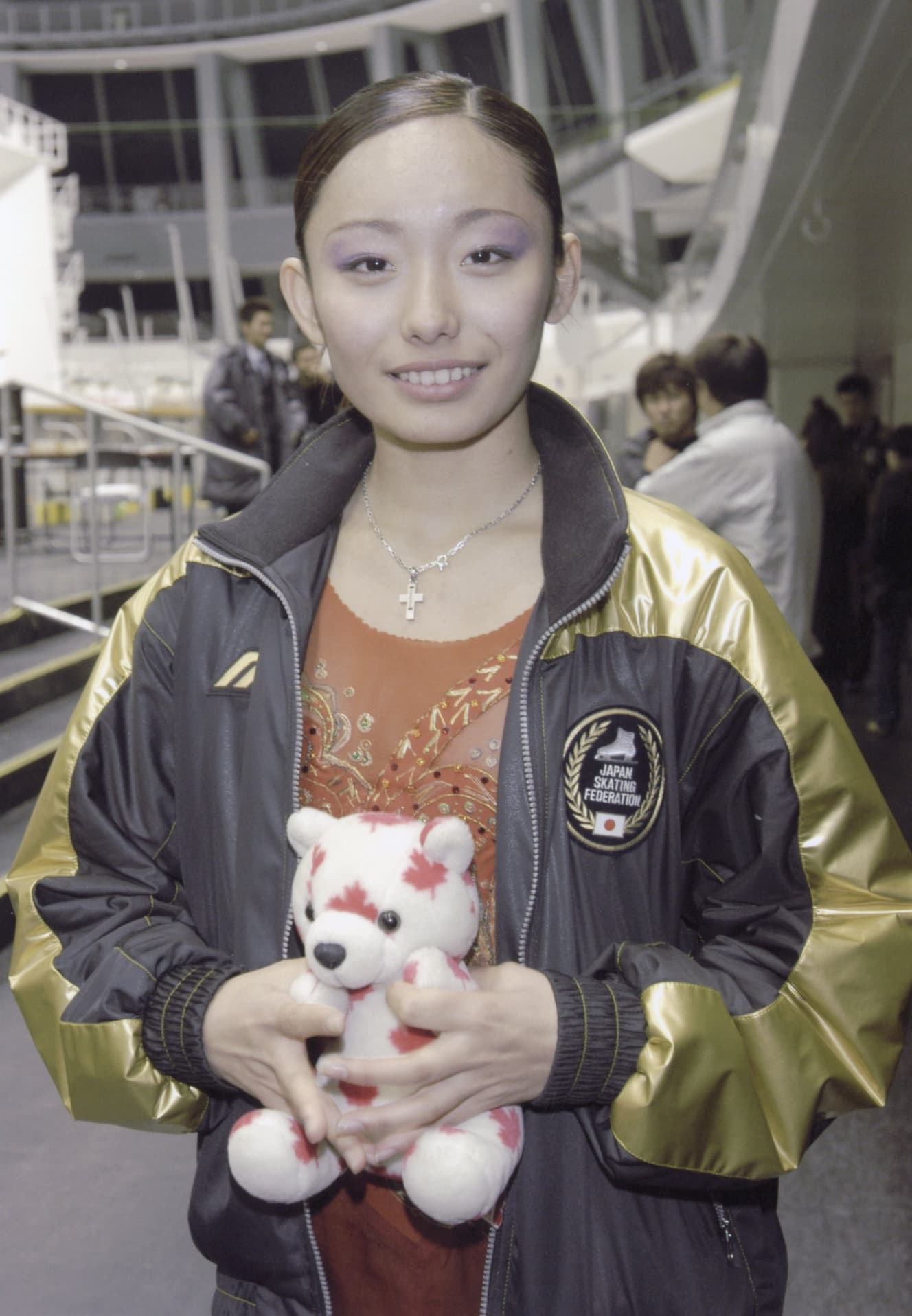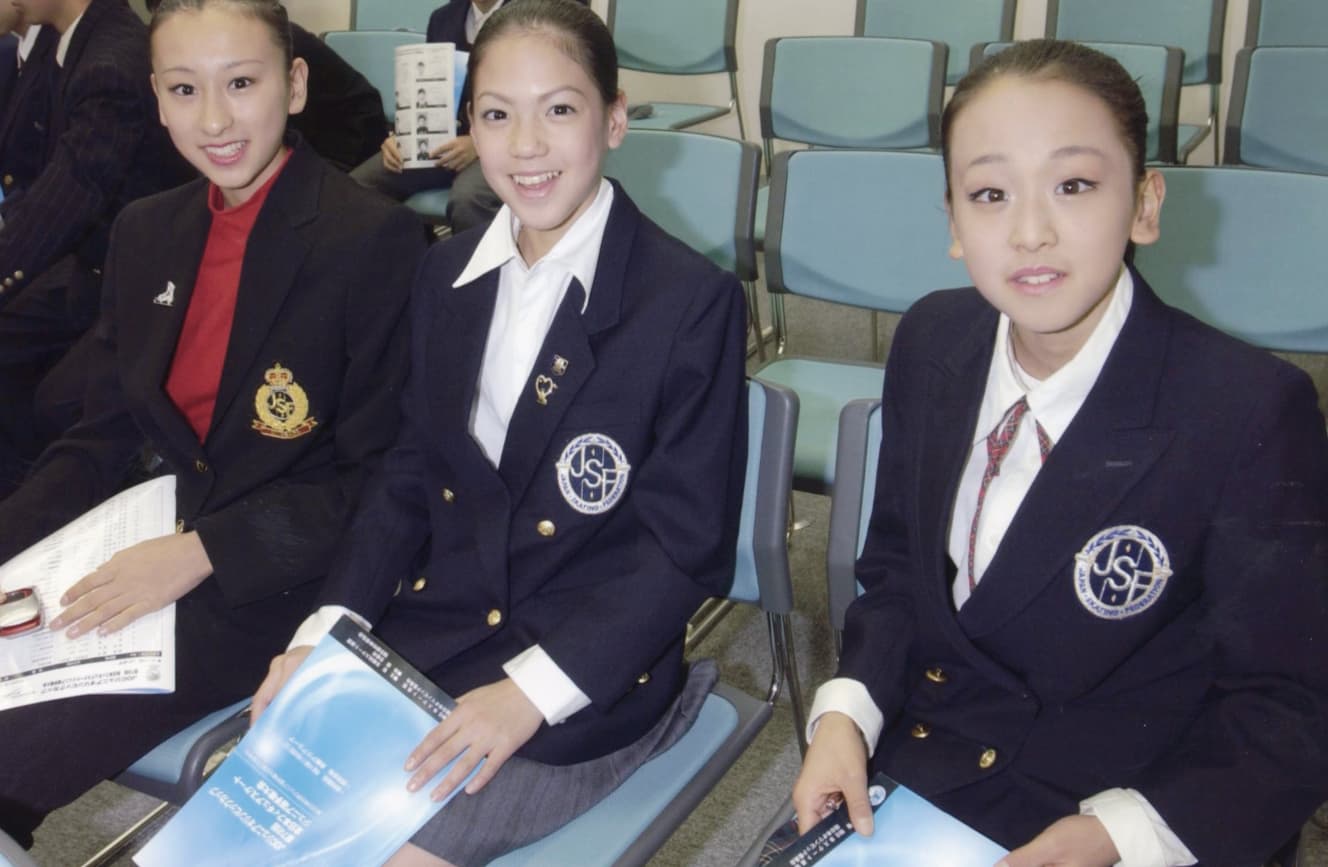Playback ’03] Miki Ando and Mai Asada, Mao’s sisters, on the eve of their breakout season
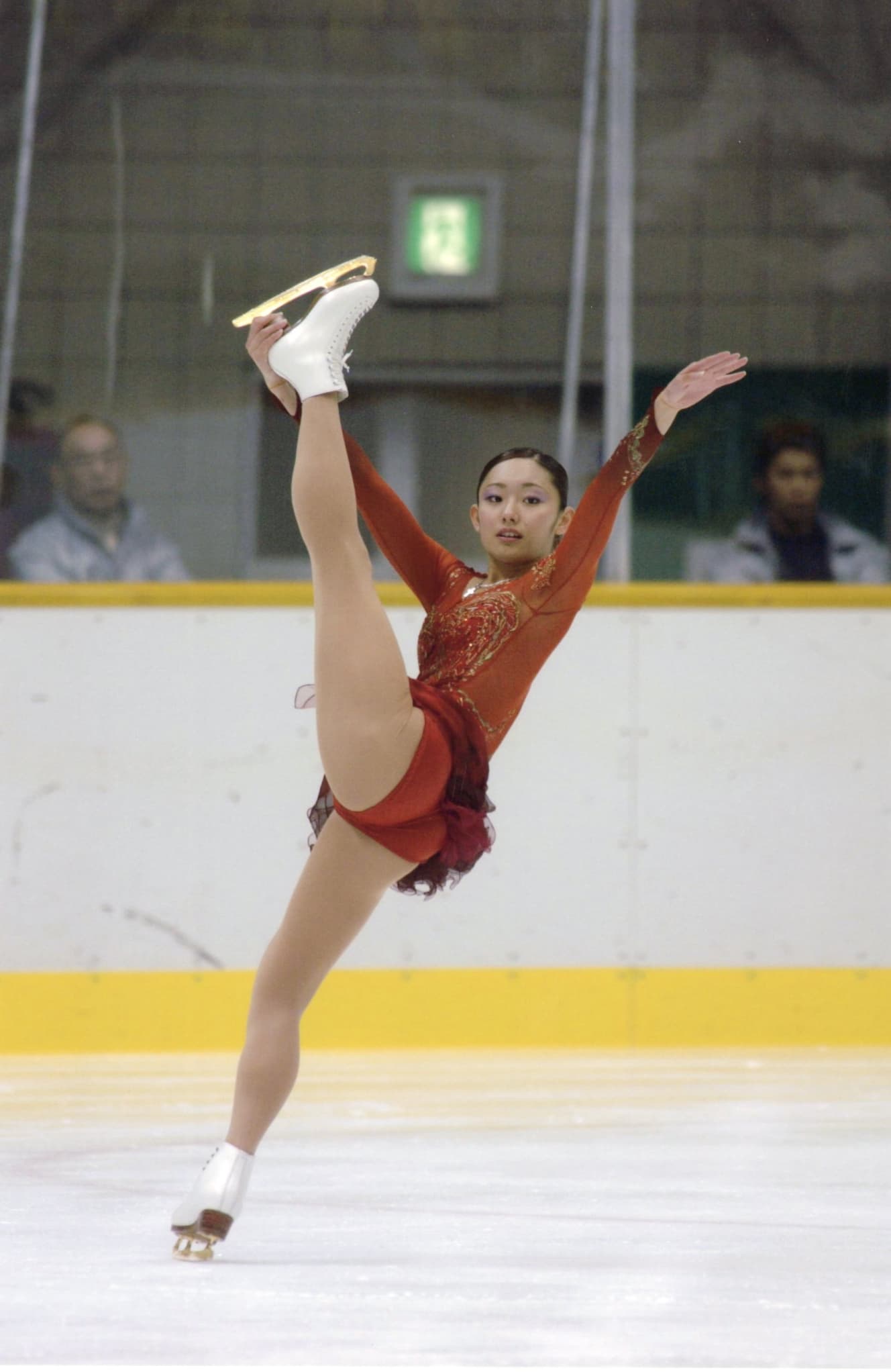
What did “FRIDAY” report 10, 20, and 30 years ago? In “Playback Friday,” we take a look back at the topics that made headlines back then. This time, we bring you a close-up look at “Miki Ando and the Asada Sisters: Three Beautiful Girls of the Golden Generation,” which appeared in the December 12, 2003 issue 20 years ago.
Figure skating is currently in the heat of the Grand Prix Final. In 2003, the Japanese women’s competition was full of talented skaters, and the junior generation was beginning to show promise for the future. We cover the All-Japan Junior Championships.
Ando, who had succeeded in the world’s first women’s quadruple the previous year
At the Torino Olympics in ’16, there might be three Japanese marbles flying at the women’s figure skaters’ award ceremony,” a coach of a foreign team pointed out, “but I’m not sure.
As a coach of a foreign team pointed out, Japan’s women figure skaters include Shizuka Arakawa (then 21), Mie Onda (then 20), and Yukari Nakano (then 18), all of whom are very talented. However, three members of the “junior generation” have been threatening these women.
On November 23, Miki Ando (then 15) was the final performer in the free skate at the All-Japan Junior Championships, and after landing a triple jump (Lutz and Loop), she became the first Japanese skater to land a quadruple Salcoe, becoming the second since Shizuka Arakawa to win three consecutive titles at the championships.
Ando became the first woman in the world to successfully complete a quadruple jump in the Netherlands last December, but since then, she had failed in official competitions while she had succeeded in practice. That’s why she was so happy with her success this time,
I was in despair when I heard that I was the last one, but I thought that I could just turn without effort, and then I could get off. It was also good that I didn’t lose speed. I’m happy.”
Ando’s rival, “I’m so happy.
Ando’s rival, Mai Asada (15 at the time), an “8-tall beauty,” placed 2nd for the second year in a row, and her sister Mao (13 at the time), who has three triple jumps in a row, placed 4th. Their coach, Michiko Yamada, who trained Midori Ito, said, “Midori was a power jumper,
Midori was a power jumper, but Mai and Mao, who are not strong yet, must be dexterous if they can jump 3.5 RPM. Nowadays, techniques are advancing, and expression is also emphasized, so we have to focus on that as well to teach them to compete on the world stage,” she said.
He is convinced that the world is the stage.
Ando is still an innocent girl who brings stuffed animals such as Snoopy and bears to the event. But since last year, she has grown 4 cm taller and is in the process of transforming from a “girl” to a “woman. Mai Asada also has long arms and legs, and on the rink, she boasts proportions that rival those of foreign athletes. If she continues to grow at this rate, her opening line may become a “dream come true.
Ando won the All-Japan Championships for the first time that year. In the 2004 season, she competed in the GP Finals and won the All-Japan Championships for the second consecutive year. Ando finished 15th in the 2006 Torino Olympics, but won the World Championships in ’07 and ’11.
Mai Asada, who was regarded as Ando’s rival, did not have any notable success after becoming a senior skater, and stopped competing in competitions after 2009, and became mainly a reporter and TV personality.
Mao Asada became the second Japanese skater to win the GP Final in 2005, and was expected to compete in Torino, but was unable to do so because she was 87 days shy of the age limit of 15. However, as you know, she would go on to create an era in the figure skating world before retiring in 2005. This is the eve of their breakthrough.
PHOTO: Ryu Kanzaki (1st), Yukiko Fukuyama (others)
